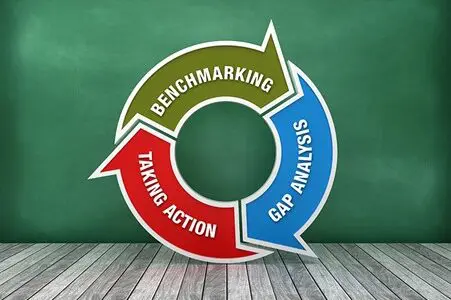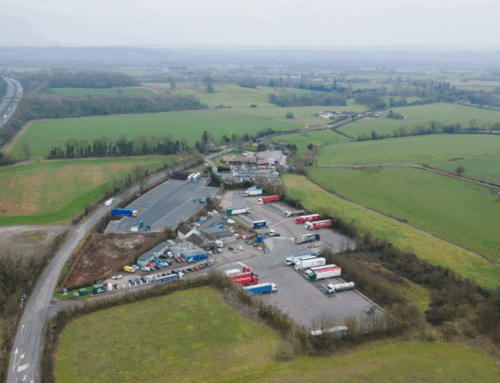Managing road risk in your business
Managing road risk is at the heart of the Driving for Better Business Programme. It’s becoming an increasingly important area for businesses that employ drivers, as high profile incidents involving driver distraction and driver fatigue make the news.
It’s not always easy to cut through the noise though, however important the message. Fleet, Transport and Safety Managers have an ever-increasing workload. Attracting fleet and transport professionals to road safety conferences, seminars or discussion groups is one thing, but ensuring the message is reaching everyone it should, and ensuring they know how to make improvements in their own driving policies and practices, is a challenge.
The recently launched Department of Transport-backed fleet benchmarking project will help businesses and organisations who employ drivers to compare their performance with others. The goal is to give them the resources and support they need to make a radical improvement in their management of road risk.
Fleet Risk Management
To help with fleet risk management Driving for Better Business will be providing a new fleet benchmarking calculator. This will be part a trio of online tools available on the Driving for Better Business website which will help organisations with their management of fleet risk. There are also case studies, illustrating how those companies that have used these tools, and shown leadership in managing road risk, have improved their overall their business performance.
A number of businesses from the Driving for Better Business community have been asked to test these fleet benchmarking resources, as well as contributors from FleetCheck, Webfleet, Geotab, and the Fleet News Fleet200 group who have also been involved in the development of the project.
The idea behind the benchmarking process that sits within the Driving for Better Business programme is one of a circular process of improvement. It allows fleet safety professionals to get an answer to the question “Do I actually need to improve?”.
Users can check how they compare against a user average benchmark as well as a good practice benchmark, based on data from other fleets in the UK.
Benchmarking my fleet – where do I start?
Of course, if the answer is to the question above is “Yes”, it follows that the next question is “where do I start?”. The Driving for Better Business programme offers an online Gap Analysis that highlights any gaps in existing management practices.
Having identified the areas where action is needed, the next question is “How do I take action?”. The Driving for Better Business programme has invested in major improvements to its comprehensive driver and vehicle management resources section to provide immediate and targeted help for any gaps identified in the online Gap Analysis. Implementing the recommendations will raise the organisation’s benchmarking scores.
Continuous improvement in fleet risk management
Once the recommended improvements have been implemented and given time to take effect, users can ask the final question, “How big was the improvement?”.
“In my opinion, there is no such thing as a perfectly run fleet,” says Simon Turner, Driving for Better Business Campaign Manager, “and I don’t know a single fleet manager who would make such a claim – even the ones who manage risk to a very high standard. It’s a constantly evolving project for most, and as a fleet grows and improves, new and different challenges may well start to appear. Successful fleet risk management is therefore about constantly measuring, analysing, tweaking and monitoring – which is what we’ve designed this new system to help with.
We’ve pulled together a group of fleet experts to design a set of metrics that most organisations would be able to work with – information they should readily have to hand. Our benchmarking tool then converts that information into ratios that are easily comparable with other fleets.”
Using fleet data to drive improvement
Data entered into the benchmarking tool is segmented by vehicle type, which enables a far more accurate comparison. Most fleets have a mix of different vehicle types. This system will enable clear comparison of the different vehicle types, including powered two wheelers, cars, vans & LCVs, HGVs and PCVs.
But how managers and employers know whether they’re doing well or not?
“We really wanted to show two benchmarks in this system.” says Turner, “The first is being able to compare your performance to the all-user average in the system. This gives organisations a clear indication of where they sit as part of the whole picture – are they above or below average? But that in itself is only part of the picture and doesn’t help them determine if where they are is good enough.”
“The second benchmark is to compare themselves against good practice. For that we have recruited a broad range of fleets, of different sizes and from different sectors, who we know manage their work-related road risk to a very high standard. Their combined average sets the benchmark for good practice. As we move forward, we will continue to monitor and update the good practice benchmark, and would like to see that improve over time, but what we’re really interested in is how we can help raise the all-user average at a faster rate, so it moves close to good practice.”
What fleet management resources will support me?
Driving for Better Business has a comprehensive library of resources section provide a range of tools, guides, advice and examples of good practice. One of the best received new features is a section dedicated to driver knowledge, with downloads and videos that can be shared with your drivers to raise awareness of essential areas. The Driving for Better Business programme encourages managers to engage their drivers and communicate with them on all these safety related issues and these resources allow those that employ and manage drivers to filter the ones they want to share, including sections on driver fatigue, driver distraction, vehicle roadworthiness and van loading limits.
Ongoing reduction in road risk
With gaps identified and improvements in management practice, the benchmarking tool allows fleet managers to see how effective their efforts have been and how much closer they are to the good practice benchmark – at which point, the whole process can begin again in a quest for further improvement.
The benchmarking system offers the option to save up to three consecutive years of data and results so that fleet and transport managers can track the trends in their business over time.
It’s a case of ever increasing productive circles – the expectation is that you will find that you and your fleet are performing a little bit better each time around.






